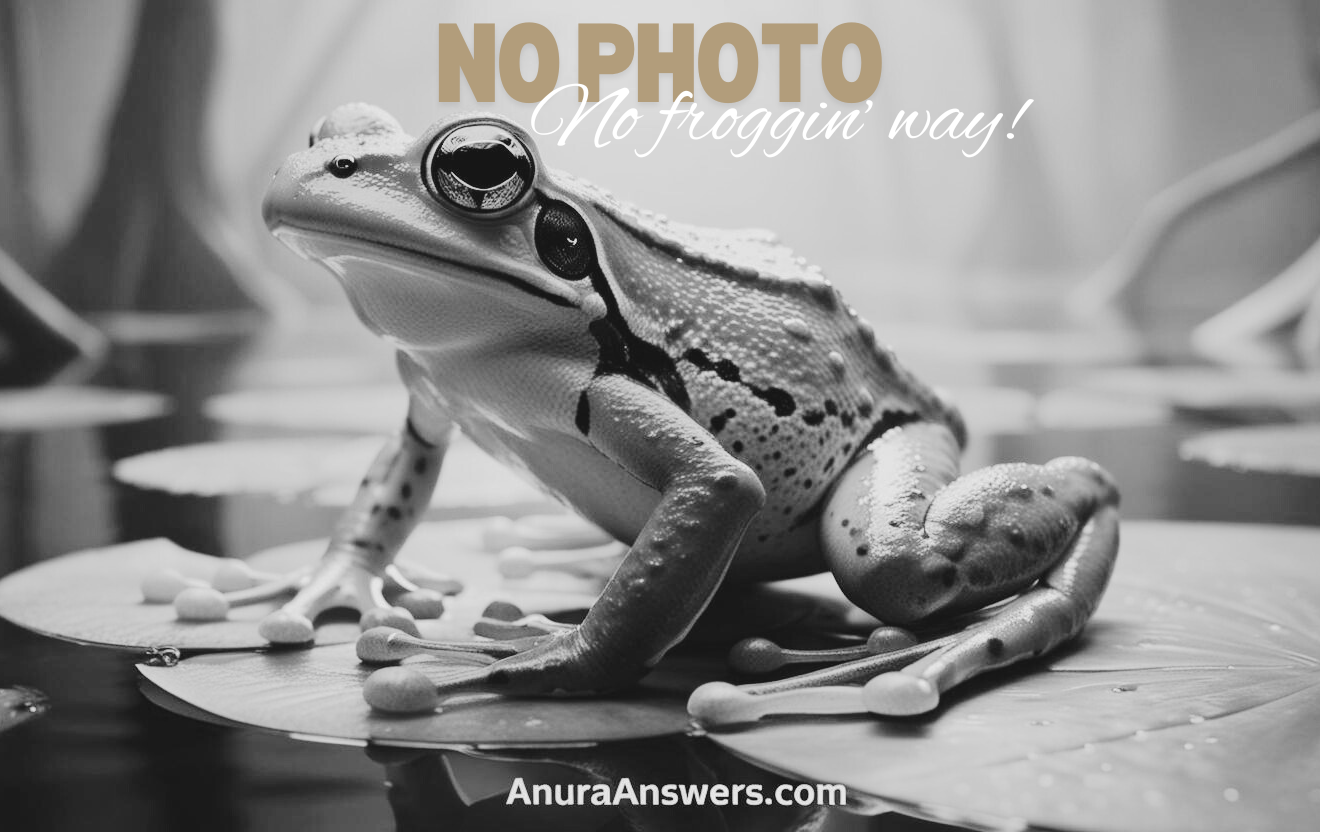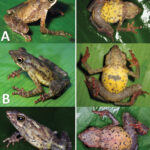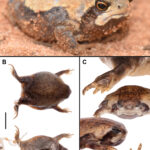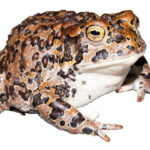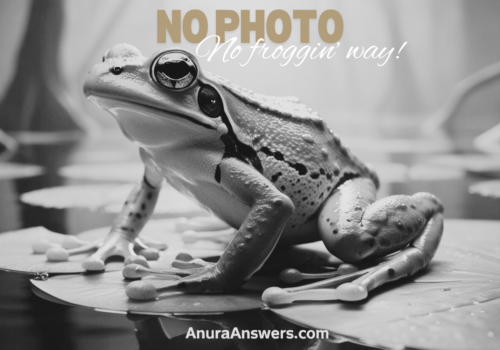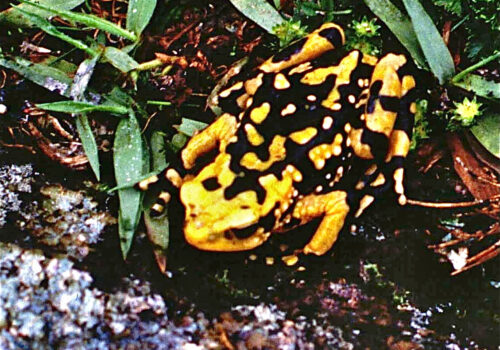- Introduction: A Jewel of Colombia's Cloud Forests
- Taxonomy and Classification: Unveiling the Identity of <em>Atelopus pastuso</em>
- Natural Habitat: Life in the Misty Realms of Southern Colombia
- Physical Characteristics: Nature's Palette on a Tiny Canvas
- Behavior and Life Cycle: Life Alongside the Mountain Stream
- Ecological Role: A Keystone Species in Miniature Form
- Threats and Conservation Status: An Urgent Call to Action
- Cultural and Scientific Significance: Beyond Biology
- Conclusion: Safeguarding Colombia's Cloud Forest Jewel
Introduction: A Jewel of Colombia’s Cloud Forests#
Nestled within the lush, mist-covered slopes of southern Colombia thrives a remarkable creature, as vibrant as it is elusive—the Atelopus pastuso. Known affectionately as the Pastuso Harlequin Toad, this striking amphibian inhabits tropical highland ecosystems, captivating scientists and nature enthusiasts alike with its vivid coloration and intriguing behaviors.
Named after the local inhabitants of the Pasto region, the species was only scientifically described in recent decades, symbolizing the remarkable diversity hidden within the rain-soaked Andes. As a member of the cherished yet critically endangered Harlequin toad group, Atelopus pastuso emerges as a symbol of both natural beauty and ecological fragility. Amidst the misty ambiance of Colombia’s montane forests, this tiny amphibian serves as a powerful reminder of the interconnectedness—and vulnerability—of life.
Taxonomy and Classification: Unveiling the Identity of Atelopus pastuso#
Belonging to the Bufonidae family—home to the “true toads” characterized by diverse adaptations—Atelopus pastuso resides comfortably within the genus Atelopus. This genus is recognized globally for its vibrant coloration, unique skin toxins, and extraordinary ecological roles in Neotropical ecosystems. The genus name “Atelopus” itself translates to “incomplete foot,” referring to the distinctive foot morphology many species within this group exhibit.
Officially described in 2010, Atelopus pastuso is distinct yet closely related to fellow members within the genus, notably sharing similarities with the intricate color patterns and skin toxin components of species like Atelopus varius and Atelopus zeteki. This close genetic kinship suggests shared ancestral lineages and allows researchers deeper insights into evolutionary adaptations, particularly those involving complex skin chemistry and pathogen resistance.
Natural Habitat: Life in the Misty Realms of Southern Colombia#
A Landscape Shrouded in Clouds#
The heartland of Atelopus pastuso stretches across Colombia’s southern Andean foothills and montane cloud forests. Dominated by a dense canopy of moss-coated trees, dripping epiphytes, and emerald-hued bromeliads, their habitat exists in a constant interplay of cloud cover, rain showers, and microclimatic diversity. Typically found at elevations ranging between 2,200 and 2,900 meters, these misty forests provide an ideal environment of saturated air and fresh, clean streams—elements essential for the harlequin toad’s delicate amphibian physiology.
A Sensitive Environmental Indicator#
The Pastuso Harlequin Toad thrives primarily near pristine mountain streams and waterfalls. These waterways, rich in oxygen and relatively free from pollution, nourish an abundance of insects—the primary food source for Atelopus pastuso. The species’ reliance on undisturbed habitats makes it an invaluable indicator of ecosystem health, subtly signaling when human interference or climatic shifts begin impacting the integrity of these delicate forest habitats.
Physical Characteristics: Nature’s Palette on a Tiny Canvas#
The striking beauty of Atelopus pastuso immediately draws the observer’s attention. Measuring around just two to four centimeters in length, its small stature is brilliantly offset by dramatic coloration patterns. Rich black or dark brown hues serve as the base canvas, marked by contrasting swirls and splashes of vibrant yellows, oranges, and greens. Each individual displays a one-of-a-kind pattern, acting much like a personal fingerprint, uniquely identifiable from others of its own species.
This dazzling palette is not merely aesthetic—it is a critical evolutionary adaptation. Through vivid coloration, the Pastuso Harlequin Toad communicates its toxicity, warning potential predators of potent alkaloids present within its skin. Such aposematic coloration reduces predation risk, allowing the delicate amphibian to navigate its habitat openly with relative confidence.
Behavior and Life Cycle: Life Alongside the Mountain Stream#
Feeding and Foraging Habits#
By day, the Pastuso Harlequin Toad is often found motionlessly perched on damp rocks bordering crystal-clear mountain streams, waiting with immense patience for prey. It feeds predominantly on small insects, especially ants, flies, and beetles, skillfully capturing them through rapid tongue movement. Its hunting approach is one of ambush—relying heavily on its immobility and precise eyesight to detect tiny movements among the foliage and stones nearby.
A Mating Ritual Within Mist and Water#
The mating season for Atelopus pastuso is highly associated with climatic and hydrological cycles—often coinciding with penetrating rains that signal ample freshwater resources. Males engage in calling behavior, producing a series of high-pitched chirping notes that echo hauntingly through the mist-drenched air, drawing receptive females to suitable breeding locations near flowing streams.
The female deposits egg clusters underwater, firmly attaching them to submerged plant stems or rocks. Transparent gelatinous egg masses soon release tadpoles, marking the beginning of a fascinating transformation. The aquatic larvae, equipped with sucker-like mouthparts adapted for grazing algae, develop rapidly before undergoing metamorphosis, emerging onto land as miniature replicas of their parents—fully formed juvenile toads ready to commence terrestrial life.
Ecological Role: A Keystone Species in Miniature Form#
Small in size yet remarkably influential, Atelopus pastuso occupies a pivotal ecological niche within the Colombian Andes. By preying upon various insect populations, these amphibians help regulate pest numbers, maintaining balanced ecosystems. Their role extends beyond mere predation, as they themselves become prey and sustain species higher in the food chain, including specialized predators resistant to their toxins, such as certain bird and snake species.
Moreover, their presence or absence serves the scientific community through their function as biological indicators. Declines in Harlequin toad populations often precede ecosystem-wide disturbances, alerting conservationists and policymakers to environmental threats imminently endangering biodiversity as a whole.
Threats and Conservation Status: An Urgent Call to Action#
Like many amphibians globally, Atelopus pastuso is threatened profoundly by humans’ encroaching footprint. Habitat destruction linked to agriculture, expanding human settlements, deforestation, and climate-driven changes threaten the very fabric of their delicate ecosystems. Yet, perhaps the most insidious threat remains disease—in particular, chytridiomycosis, a fungal infection devastating amphibian populations worldwide.
As listed by the IUCN Red List, Atelopus pastuso holds a vulnerable classification, a stark reminder that without swift conservation intervention, the species may soon edge toward critically endangered or, worse yet, extinction. Colombian conservation groups widely prioritize habitat protection measures, alongside captive breeding and reintroduction efforts, to ensure that this charismatic toad continues to enchant future generations.
Cultural and Scientific Significance: Beyond Biology#
The Pastuso Harlequin Toad embodies natural heritage and regional pride. For local indigenous communities within southern Colombia, the presence of vibrant amphibians like Atelopus pastuso symbolizes river purity and ecological vitality, deeply interconnected to traditions, storytelling, and recognition of environmental balance.
From a scientific viewpoint, studying the species elucidates complex ecological relationships, evolutionary adaptations, and pathways for disease resistance. Medical researchers continually investigate the chemical composition of Atelopus toxins, pursuing potential medicinal breakthroughs. Such amphibians offer rich avenues for scientific exploration, emphasizing nature’s inherent value beyond aesthetic appreciation.
Conclusion: Safeguarding Colombia’s Cloud Forest Jewel#
Atelopus pastuso embodies more than just vivid patterns and captivating behaviors; it signifies the delicate symphony of interconnected life defining Colombia’s stunning cloud forests. Protecting these frogs means safeguarding entire ecosystems that support myriad creatures, including ourselves. As nature enthusiasts, aspiring biologists, and conservation advocates, the responsibility lies with us to champion the protection and preservation of these mesmerizing beings.
By committing ourselves to conservation awareness, supporting responsible habitat management programs, and educating others, we help ensure that future generations will continue to marvel at nature’s extraordinary diversity—the tiny, brilliant jewels like the Pastuso Harlequin Toad among them.
